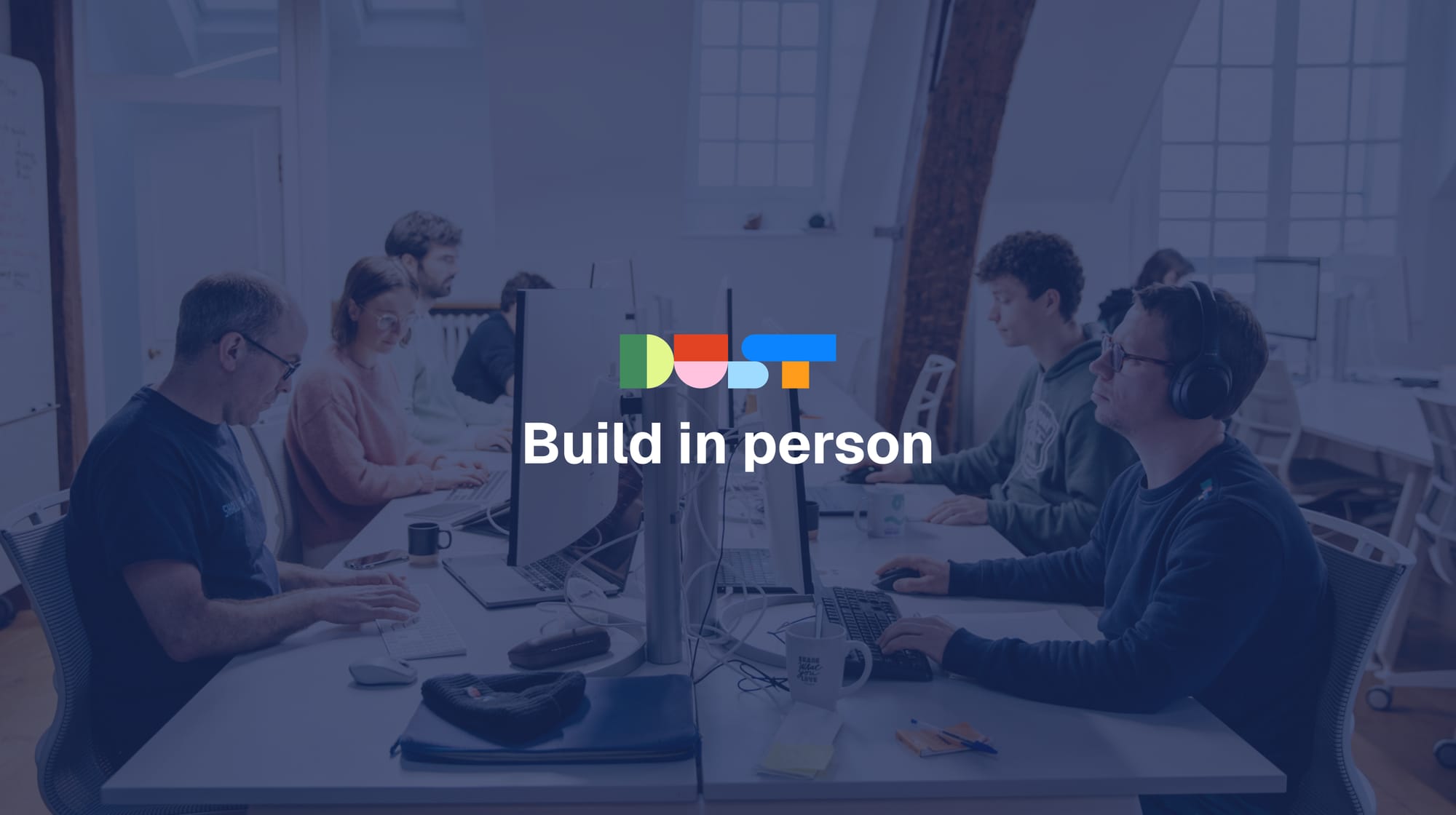Build in Person

Engineering an AI operating system that transforms how work gets done requires deep collaboration and rapid iteration. At Dust, we've made the deliberate choice to be office-first. Here's why.
Building at the edge of what's possible
Building Dust means operating at the intersection of large language models, enterprise infrastructure, and user workflows. The technology landscape shifts weekly, if not daily. What was impossible last month becomes possible today, and what works today might be obsolete tomorrow.
The story of the Transformer architecture – the foundation of modern LLMs and the technology behind ChatGPT, Claude, and Dust – perfectly illustrates why physical proximity matters when pushing boundaries. In early 2017, two Google research scientists were discussing a new approach to machine translation in a hallway. A passing colleague overheard their conversation about "self-attention" and joined in. This chance encounter brought together the minds that would create one of the most significant breakthroughs in AI.
This story resonates deeply with us at Dust. The product we create isn’t born from scheduled Zoom calls or async Slack threads. It comes from the kind of spontaneous, high-bandwidth collaboration that only happens when talented people share the same space.
The speed of innovation
When you're building something entirely new, the ability to quickly share context and iterate is crucial. A conversation by the coffee machine can spark a solution that would have taken days of back-and-forth in a remote setting. At Dust, we've seen this play out repeatedly:
- Engineers discover edge cases in real-time while discussing with Success or Operations team;
- Product decisions that would take a week of meetings happen organically over lunch;
- Technical challenges get unblocked through impromptu debugging sessions.
Accumulating organizational knowledge
Our work at Dust requires constant synthesis of new information – from evolving AI capabilities to emerging enterprise needs. This knowledge doesn't just live in documentation or Notion pages. It's built through countless small interactions, debates, and shared experiences.
Being together in person creates what we call "peripheral listening" and "ambient context" – the deep understanding of why things work the way they do, which trade-offs were considered, and what we learned from past attempts. This context is invaluable when making decisions about where to take the product next.
A Personal Note
I was skeptical at first. Having built teams remotely during COVID, I was convinced that office-first was a step backward. But seeing how much faster we move, how much deeper our technical discussions go, and how much stronger our solutions are when we're together changed my mind.
The milestones we've hit at Dust – from August 2023, when we were the first to release the multi-agents mode to our latest enterprise-grade features – required the kind of rapid iteration and deep collaboration that's hard to replicate in a remote setting.
Looking Ahead
Will we always be office-first? Like everything in technology, we'll adapt as circumstances change. But right now, when we're inventing new ways for enterprises to harness AI, being together gives us an edge we're not willing to give up.
We know this approach isn't for everyone, and that's okay. But if you're excited about pushing the boundaries of what's possible with AI, and want to do it alongside people equally passionate about the problem, we'd love to hear from you.
This post was written by Pauline Pham, Operations at Dust. For open positions at our Paris and SF office, check out our careers page.

